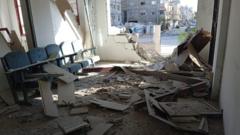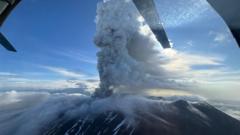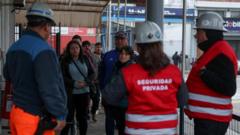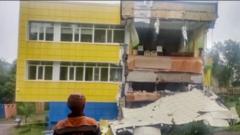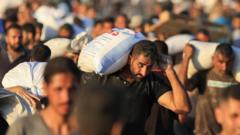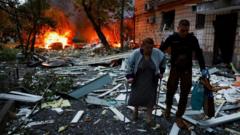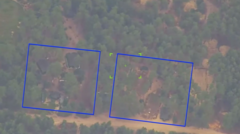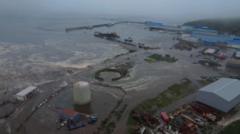Rescue teams worked late into the night following a powerful 7.1 magnitude earthquake that devastated Tibet, resulting in at least 126 fatalities and damaging over 3,600 buildings. The initial quake, recorded at a depth of 10 km, struck near Everest around 09:00 local time on Tuesday and was felt across Nepal and parts of India. With temperatures projected to plummet to -16C, survivors face dire circumstances as the rescue effort continues amidst the destruction. Video footage from state media illustrates the extensive damage in Shigatse, where emergency workers scrambled through rubble to provide blankets and care to the affected population.
Rescue Operations Intensify Following Devastating Tibet Earthquake
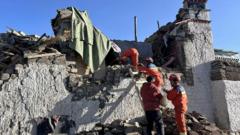
Rescue Operations Intensify Following Devastating Tibet Earthquake
A significant earthquake has struck Tibet, prompting large-scale rescue efforts in challenging conditions as the region grapples with extensive damage.
Many residents experienced significant impacts in their daily lives due to the destructiveness of the quake. One local shop owner described the extent of the devastation, stating, “lots of houses collapsed” as a result of the quake, which particularly impacted structures made from vulnerable materials like dirt. As ambulances transported casualties, power and water supplies were interrupted further complicating recovery efforts. Reports indicated more than 40 aftershocks followed the initial quake, raising concerns about aftereffects in local communities.
Geological experts have estimated a low likelihood of another major quake in the immediate future, although smaller tremors may continue to shake the area. The region, situated at the base of Mount Everest, also faced tourism disruptions, with all sightseeing activities halted following the earthquake. The Panchen Lama, a significant figure in Tibetan Buddhism, and other local authorities emphasized the necessity of swift humanitarian response.
As anxieties run high regarding potential aftershocks, President Xi Jinping has ordered an exhaustive search and rescue operation, while the Chinese military has deployed drones and other resources to assist the affected region. Despite tremors felt in Nepal, local authorities reported minimal damage and no casualties, although residents continue to reflect on past disasters. The seismic history of the region adds to a growing call for robust infrastructure and preparedness to mitigate future disasters.
Geological experts have estimated a low likelihood of another major quake in the immediate future, although smaller tremors may continue to shake the area. The region, situated at the base of Mount Everest, also faced tourism disruptions, with all sightseeing activities halted following the earthquake. The Panchen Lama, a significant figure in Tibetan Buddhism, and other local authorities emphasized the necessity of swift humanitarian response.
As anxieties run high regarding potential aftershocks, President Xi Jinping has ordered an exhaustive search and rescue operation, while the Chinese military has deployed drones and other resources to assist the affected region. Despite tremors felt in Nepal, local authorities reported minimal damage and no casualties, although residents continue to reflect on past disasters. The seismic history of the region adds to a growing call for robust infrastructure and preparedness to mitigate future disasters.


